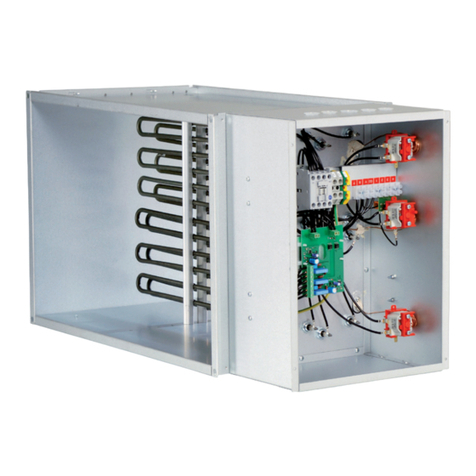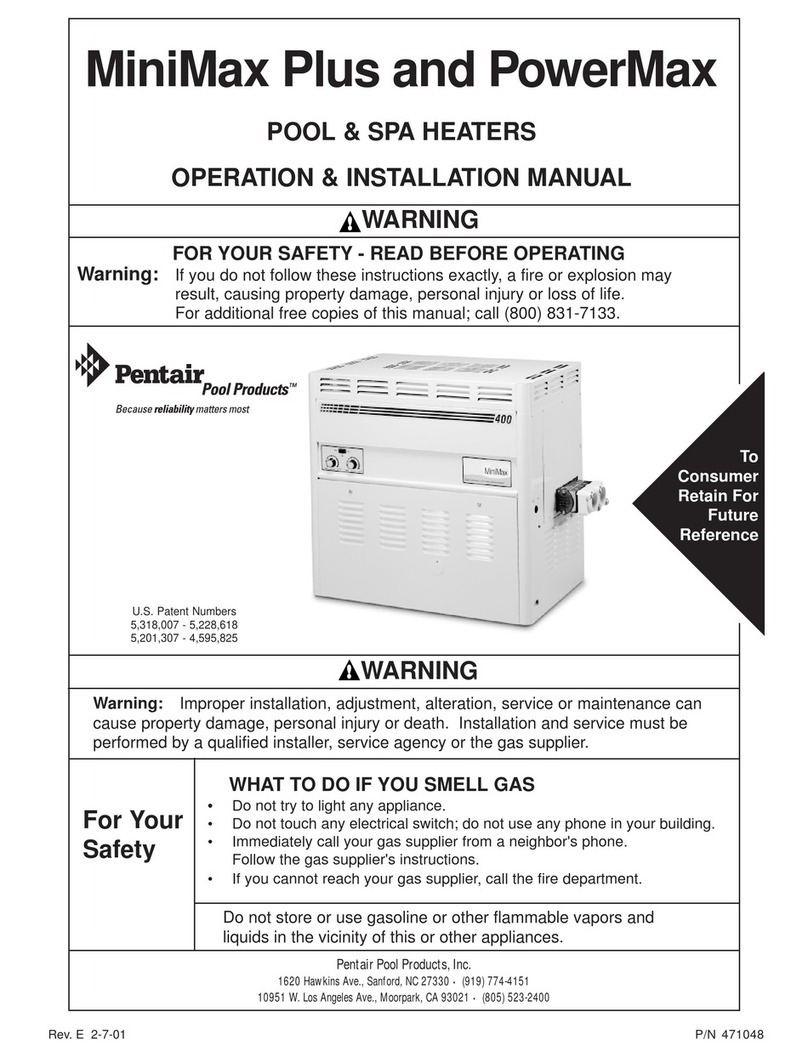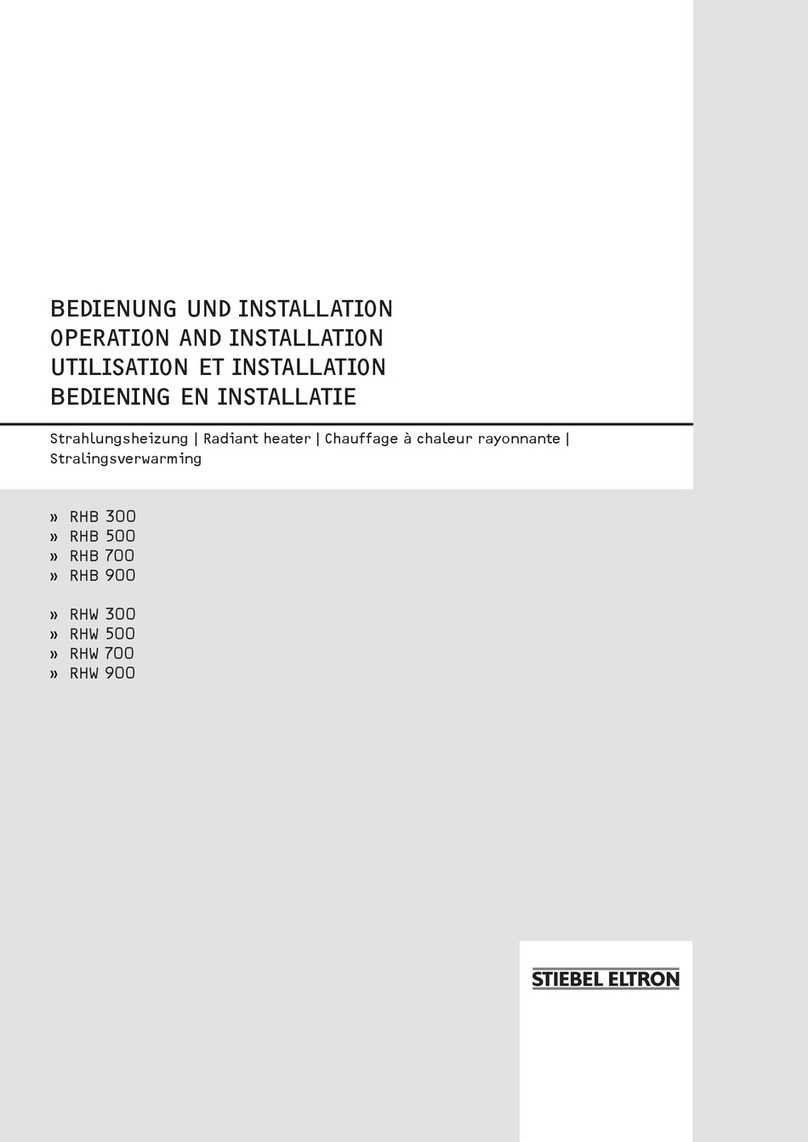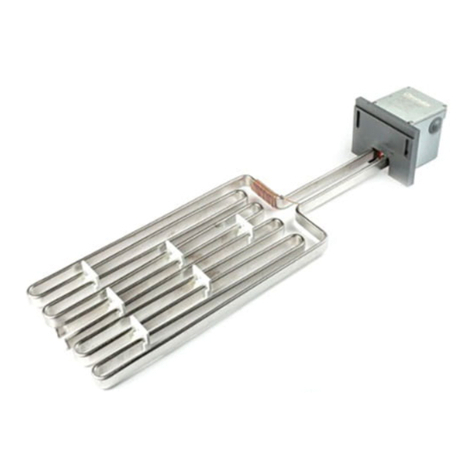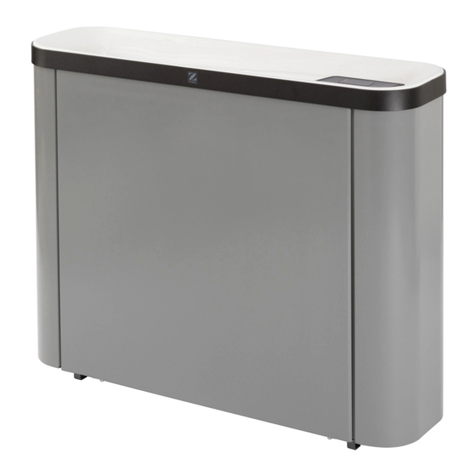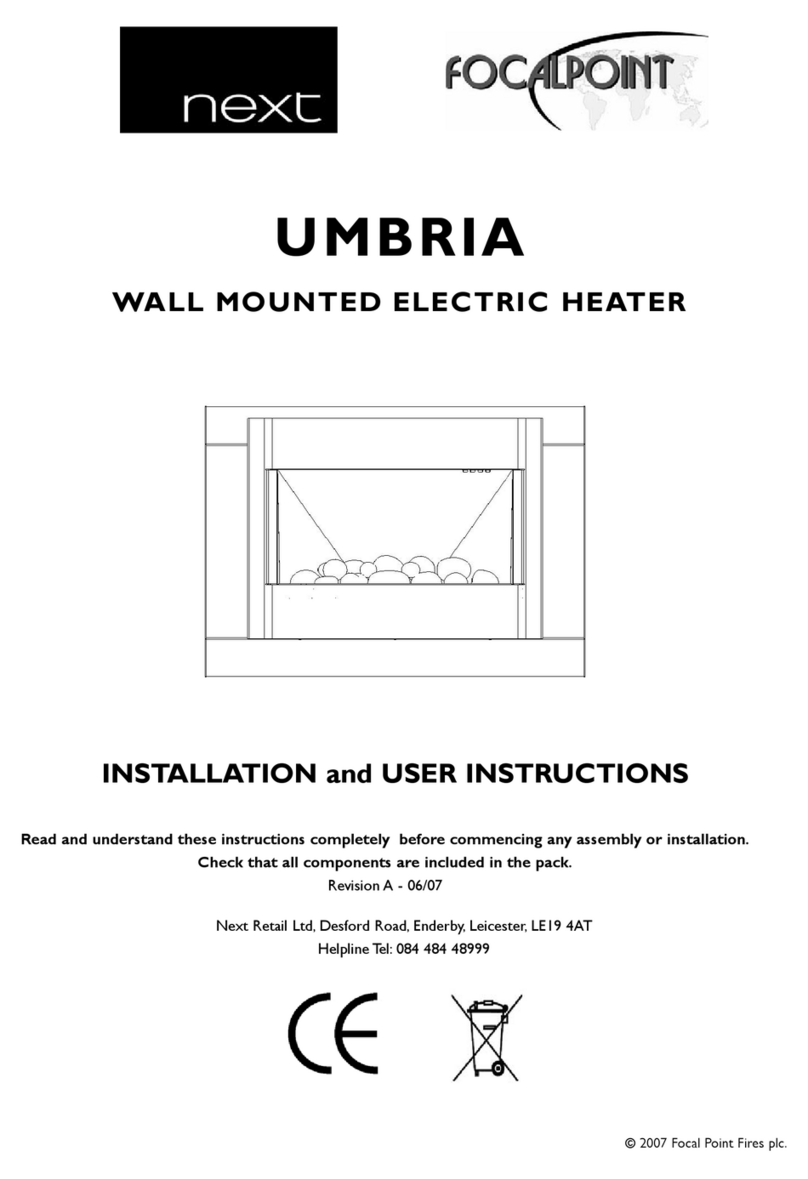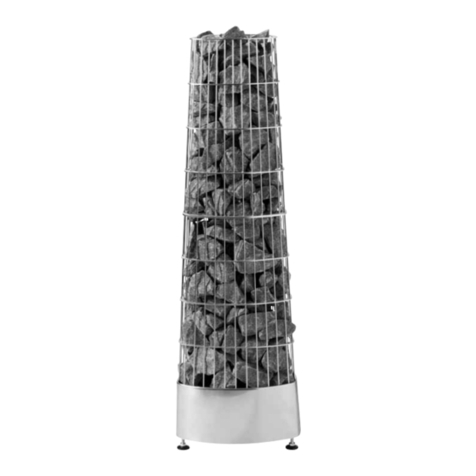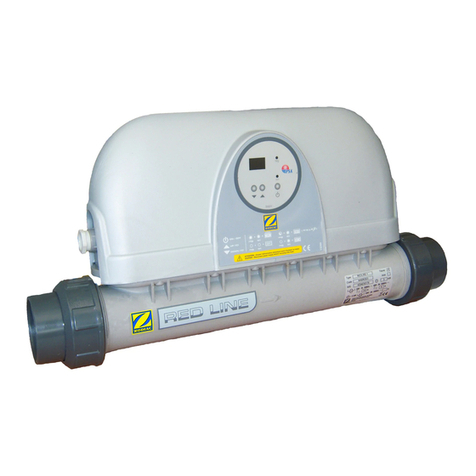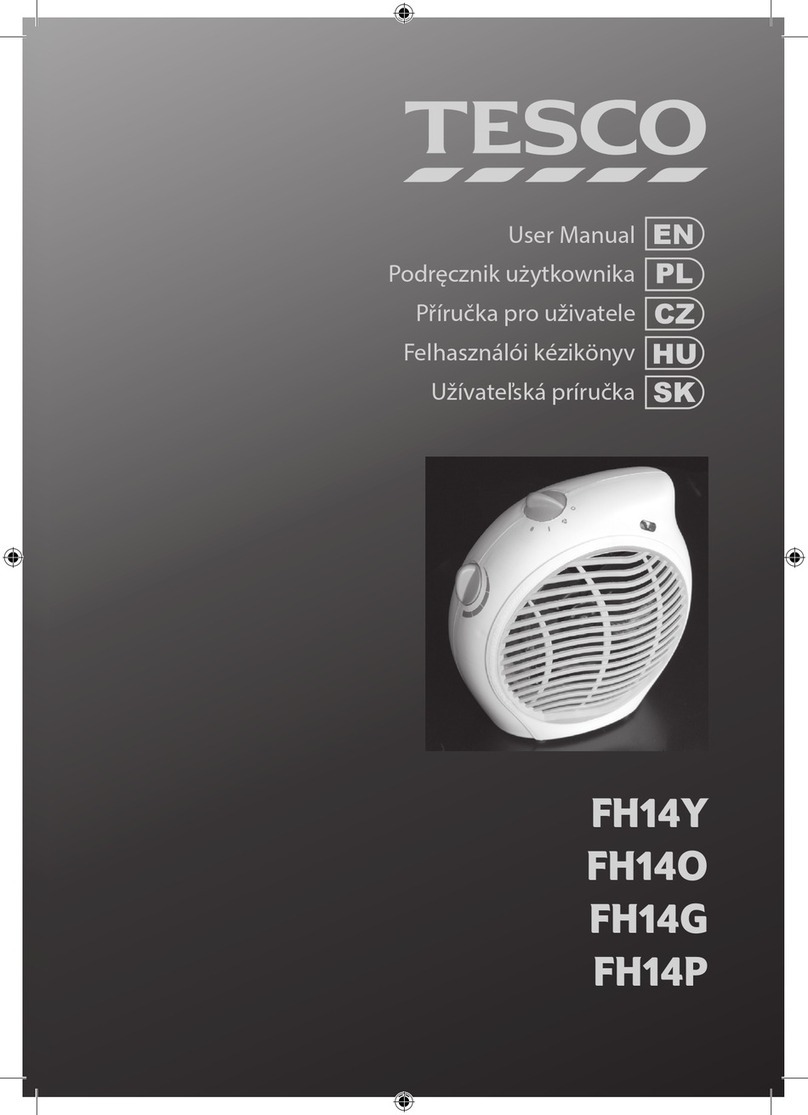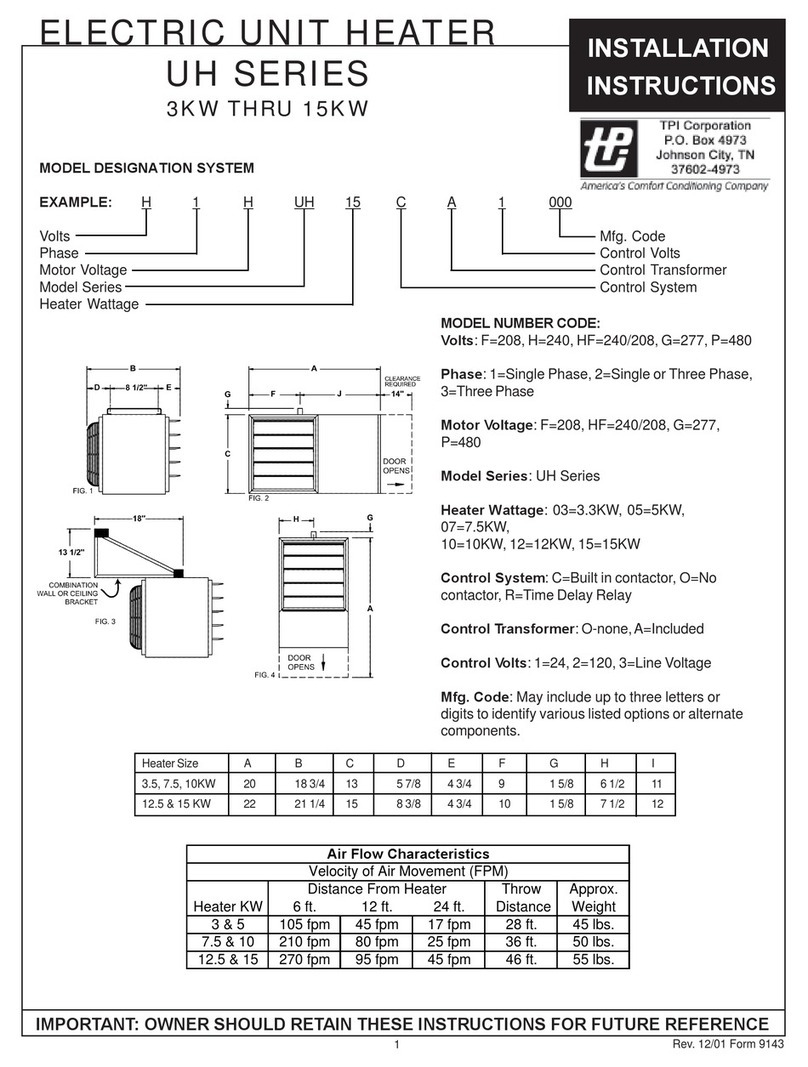SITE RREQUIREMENTS
The appliances are designed to be wall mounted via the brackets on the rear panel with the fixings
provided. The wall should be relatively flat and not interfere with any of the ventilation slots in the rear
panel.
The wall must be structurally sound and of a material capable of withstanding moderate heat. Finished
plaster, conventional wallpaper, dry-lined plaster board are examples of suitable materials. Materials
such as “flock blown vinyl”, embossed paper and cloth wall coverings which are sensitive to even
small amounts of heat should be avoided, as some discolouration may occur.
It should be noted that the appliance creates warm convected air currents. These currents move heat
from the room surroundings to, and up the wall surfaces adjacent to the heater.
Installing the heater next to these types of wall coverings or operating the heater where impurities in
the air, (such as tobacco smoke) exist, may slightly discolour wall finishing.
If the appliance is to be mounted on a dry lined or timber framed construction then the integrity and
ability of the wall to carry the weight of the appliance must be confirmed. It is important in these cir-
cumstances that any vapour barrier and/or structural members of the house frame are not damaged.
If you are unsure of the ability of the wall to carry the weight and/or which type of wall fixing to use,
you should take professional advice and obtain the correct fixings. Alternatively, find a more suitable
wall location.
DDOONNOOTT-mount on a ceiling or floor.
-recess any part of the appliance into the wall.
-site any electrical equipment e.g. plasma screen TV sets etc,
on the wall above the appliance.
- site in a position where curtains or drapes could cover the appliance.
-site in a position where other soft materials could cover e.g. below a coat rack.
-site behind an opening door where mechanical impact/damage could occur.
-site where the supply cable would become a trip hazard.
-sit, stand or forcefully pull on the appliance.
-obstruct, cover or force items into the openings.
-use the heater to dry clothes.
- site/use in an outdoor location(s).
-run the supply cable under carpets.
CLEARANCES TTOCCOMBUSTIBLE MMATERIALS
It is important that the following clearances are maintained from the appliance to combustible materials. These
clearances are dependant on the mounting location as defined below:
a) WWall MMounted:
The minimum distance from the top of the appliance to a ceiling is 500mm.
The minimum distance to the sides of the appliance is 100mm.
The minimum distance to the front of the applaince is 500mm.
The appliance can be wall mounted at floor level, providing it does not stand on a carpet or similar material.
Allow clearance to carpets of 30mm.
A shelf may me mounted above the appliance provided it meets the requirements for shelfs as detailed in b)
below.
b) FFloor/Fireplace MMounted:
If mounted into a fireplace surround, ensure that the minimum clearance distances to mantles and/or any
shelves fitted above the appliance are as follows:
When iinstalled wwith aaccombustible ffire ssurround, tthe aability ooftthe ssurround ttowwithstand pprolonged mmoderate
heat mmust bbeaassured.
2
4.0
5.0
Shelf DDepth Minimum SShelf DDistance
(measured from top of appliance)
2” or (50mm) 11.5 “ or (290mm)
6” or (152mm) 15.4 “ or (390mm)








